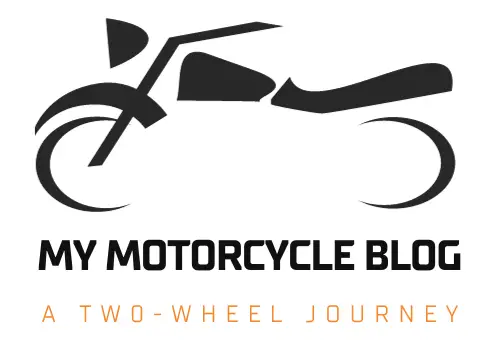Ever go to turn on your bike, and ignition key wouldn’t turn? You end up fighting and cussing, asking why my motorcycle ignition is switched hard to turn? Been there, done that. Now let’s cover what I learned about stuck motorcycle keys.
Why Is My Motorcycle Key Not Turning?
My TaoTao TBR7 Dual-sport Motorcycle Is a Magnet for things to go wrong.
I’ve had problems with my motorcycle’s ignition switch not turning. The weird thing about the TBR7 key is that it’s unusually long, so the ignition key slot is deep and has many contact areas where things can go wrong.
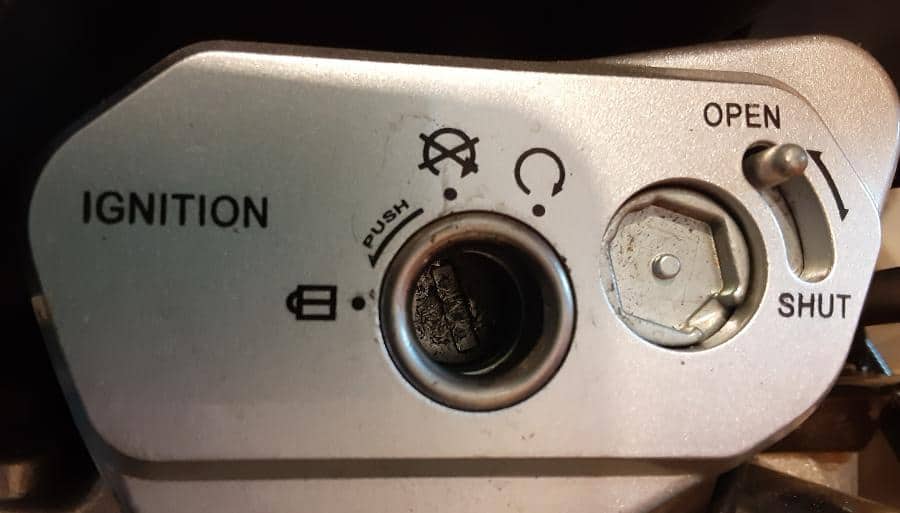
So I thought I would share with you what I learned about my motorcycle’s ignition switch and the key slot.
What Does It Mean When Your Ignition Is Hard To Turn?
Well, pointing out the obvious, the motorcycle key goes in the ignition. That is sometimes half the battle, and I can also talk about my experiences when the motorcycle key doesn’t go in the ignition. But not right now. Let’s keep this simple.
Your motorcycle key is fully inserted into the ignition switch but is hard to turn or won’t turn at all.
What Causes A Motorcycle Ignition Switch To Stick?
Again, what I learned from troubleshooting my motorcycle key problems is. Also, based on the standard pin-and-tumbler-designed motorcycle locks. WikiPedia: Pin Tumbler Lock
The ignition switch on a motorcycle is a mechanical moving part; like many mechanical moving parts on the bike, it can fail. In this case, it fails to move when you try to turn the key.
Inside the ignition key, there are several moving parts. The pins that move into the correct position based on the correct key are inserted, which allows the rotation of the key cylinder.
If any of those pins are out of position, the lock cylinder doesn’t rotate.
Quick Point:
If an incorrect key is inserted, the ignition switch is NOT supposed to turn, so check the key you are trying to use. If correct, move on. If not, get the right motorcycle key.
Now, if you have the correct key in the ignition and still hard to rotate, a source of problems is the pins.
The lock pins are small pieces of metal(round like pins) that move in and out, up and down, to a specific position, creating a sheer line for the lock cylinder to rotate. Now all those pins have to be in their correct position to allow the cylinder to rotate.
In my head – Keep It Simple, Silly:
As a key is removed, the pins are fully inserted toward the center of the key way by a spring. As the key is inserted, the pins are moved away from the key into a position allowing for rotation of the lock.
If any pins fail to move freely, the pin could be out of alignment, and the key cannot correctly position the pin.
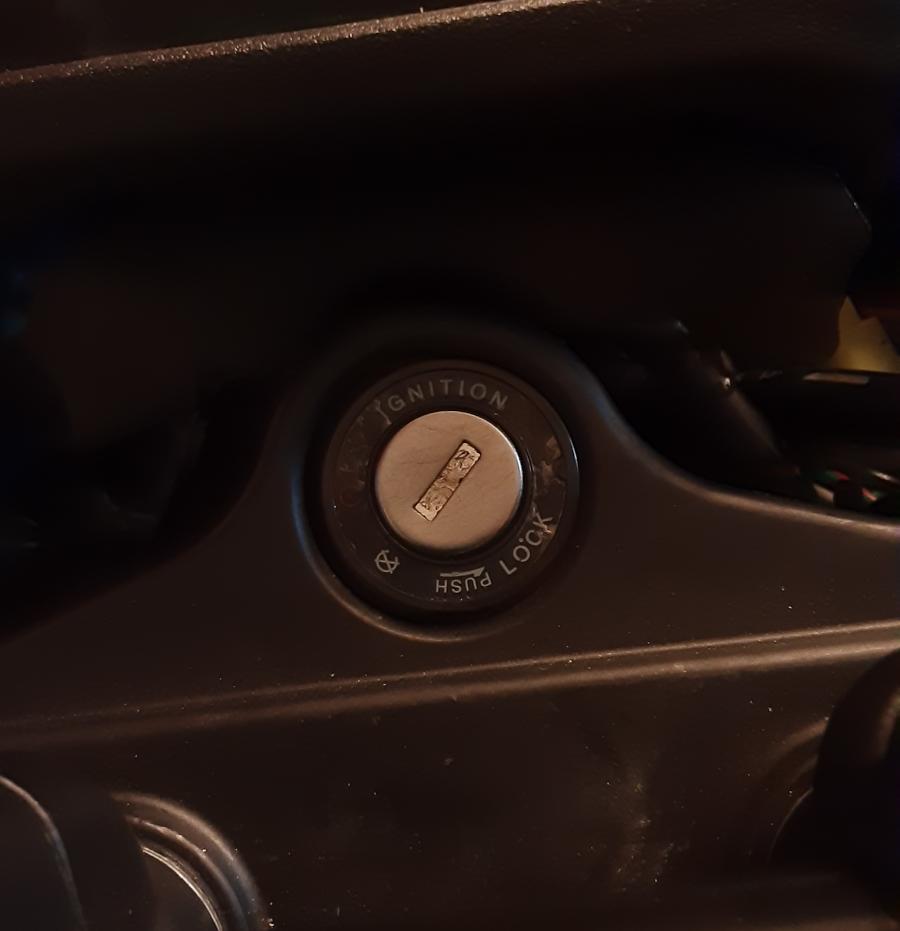
What Could Cause Improper Pin Alignment?
Forgoing using the wrong key, anything that binds or creates too much friction can jam the pins and cause misalignment.
A frozen lock would cause this, ice crystals can interview with the pins and the whole lock’s operation, and this problem is pretty obvious.
Dirt and grim seemed to be my problem. Dirt or grim would get into the keyway, and with lock pins manufactured with tight clearance, they jam up.
How Does Dirt And Grim Get Into The Ignition Switch?
Great question, at least I thought so.
I know my TBR7 is a dirt bike( TBR7 Is A Dirt Bike! ), so it’s around dirt. However, I thought to myself, when riding my motorcycle, the key is already inserted and should be blocking any dirt entry.
Also, I figured that when I pull the key out, any dirt should be pulled out as well.
Well, wrong on both accounts for me.
Often it introduces dirt when it’s inserted. Depositing foreign material from our pockets, or dirt and grim on our hands.
Also, any dirt lying on top of the look is often pushed in by the key’s insertion.
Add in most motorcycle ignition keys are vertical; gravity prevents dirt and grim from just being pulled back out when we remove the key.
So, dirt happens.
How Do You Fix A Sticky Motorcycle Ignition Switch?
So when we have a hard-to-turn key, what do we do? I giggle it, and it seems to work sometimes.
What is giggling the key doing?
Knocking around the pins, hopefully freeing moving services from binding. This action sometimes temporary works. Now, if we can keep moving parts freely, that would be the permanent solution.
On our motorcycles, we keep things moving with lubrication.
Can I Lubricate My Motorcycle Ignition Switch?
Yes!
Lubricant will keep pins and other moving parts well-moving.
Now, like other lubricated parts of our bikes, you should only use lubricants designed for locks. The locks have tight clearances, and the wrong lube can gum up the works.
Author’s Notice: This page contains affiliate links, for which I may earn a commission by their use. As an Amazon Associate, I earn from qualifying Amazon purchases.
Can You Use WD40 On The Motorcycle Ignition Switch?
No please don’t.
Although WD40 is an excellent lubricant, it’s not the best. It was initially designed as a water dispersant for the military, where the “WD” part of its name comes from, and leaves a very, very thin film.
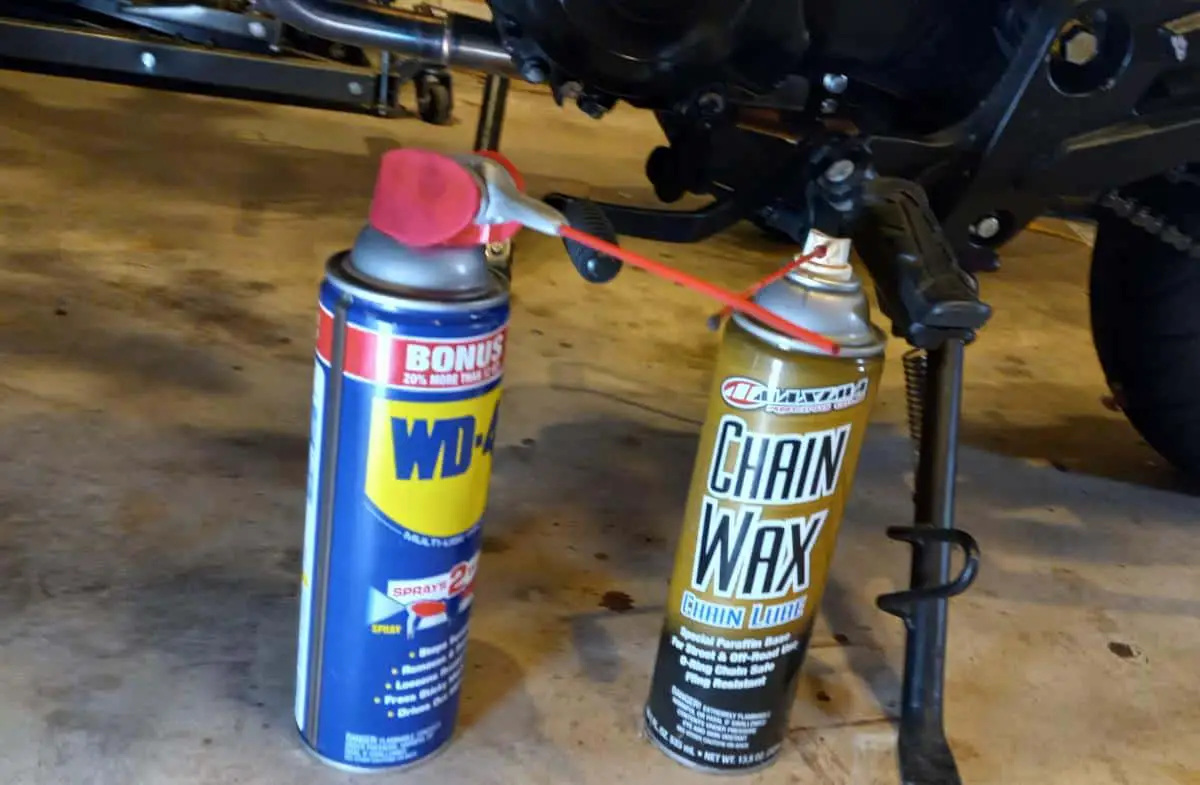
WD40 is good for freeing up rusted parts, but I try to use a better lubricant once I get something free.
WD40 makes a separate lock lubricant, and I haven’t used it, but from what I read about it, it sounds like a much better product than just using WD40.
Which Is Better, Silicone Or Lithium Grease?
In my humble opinion, neither.
I wanted to address this question since, in the past, I tried lubricating car door locks with these products.
I tried lithium grease. Had some left over from lubricating my garage door rails and tried it in a lock? I was not too fond of it. The lithium grease left a mess on the key after I pulled it out. Grease got on my hands and in my pocket.
Also, over time, the lithium grease became ‘thicker’ with age, collecting dirt and grim rather than repelling it. Grease looked like it loved pocket lint.
I had learned regular WD40 wasn’t a good door lock product, so I used the silicone version of WD40. That was too thin and, again, seemed messy with time. Like silicon, lubricant attracted dust and pocket lint.
I wouldn’t use either silicon or lithium grease on my motorcycle ignition switch.
So, How Do You Lubricate A Motorcycle Ignition Switch?
I lubricate with dry lubes. It sounds contradictory, but it hear me out.
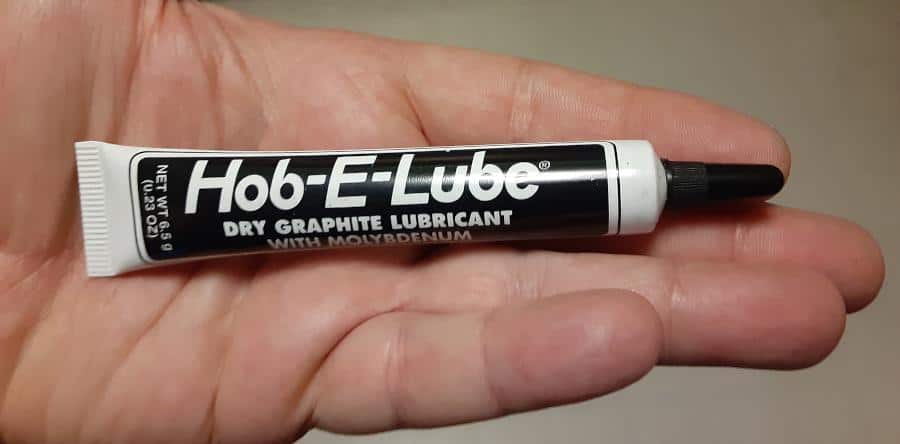
First, let’s cover what a dry lube won’t do to a motorcycle ignition switch.
- Dry lubricants will not freeze or be affected by temperature.
- Dry lubricants will not work as adhesives collecting dust and dirt.
- Dry lubricants won’t leave oil stains on hands or clothing.
Now cover what dry lubricants will do for your motorcycle ignition switch.
Click to check prices: Graphite Dry Lock Lubricant Powder
1.- Lubricate the ignition switch moving parts.
Well, this list was short, but that’s why we want all the tiny parts inside the lock to move and for us to be able to turn the ignition switch.
Drawbacks With Dry Lubricants.
1.- It Can Leave Marks.
The type I use is graphite based, like the black center of pencils. It’s used in pencils because it leaves marks. Well, the powder can leave marks on your hands and clothing. Blackish-grey marks.
However, this dry lube sticks like dust to you, washes/brushes off easily, and washes out of my clothes easily.
2.- It’s easy to use too much dry lock lube.
If the dry lube is too thick or too much used, the lube can fill all the voids preventing the key from entering the key way. So very little is used to get the job done.
3.- It needs requires more frequent reapplications.
Because the dry lube doesn’t stick like oil or grease based lubes, I feel a little lost each time I use the ignition switch. A little comes out every time I pull out the key.
So, How I Lubricate A Motorcycle Ignition Switch?
The try lube I use is, as mentioned, graphite-based. I use a powdered version, although I heard there are aerosol versions. I stick with the dry version because I want the graphite, no additional greases or propellants.
I use a clean piece of paper and create a small pile of dry lube. Then with my key, I rub the key into the dust, coating it with a bit of graphite.
Working a good coating on the actual teeth of the motorcycle key. Since the motorcycle key’s cut teeth are the surfaces that come in direct contact with the lock’s pins.
Then I insert and draw the key several times, then I lightly re-coat the key and then cycle the motorcycle ignition switch.
I examine the key and clean the key.
I am done till the next time. I feel the lock could use more lube.
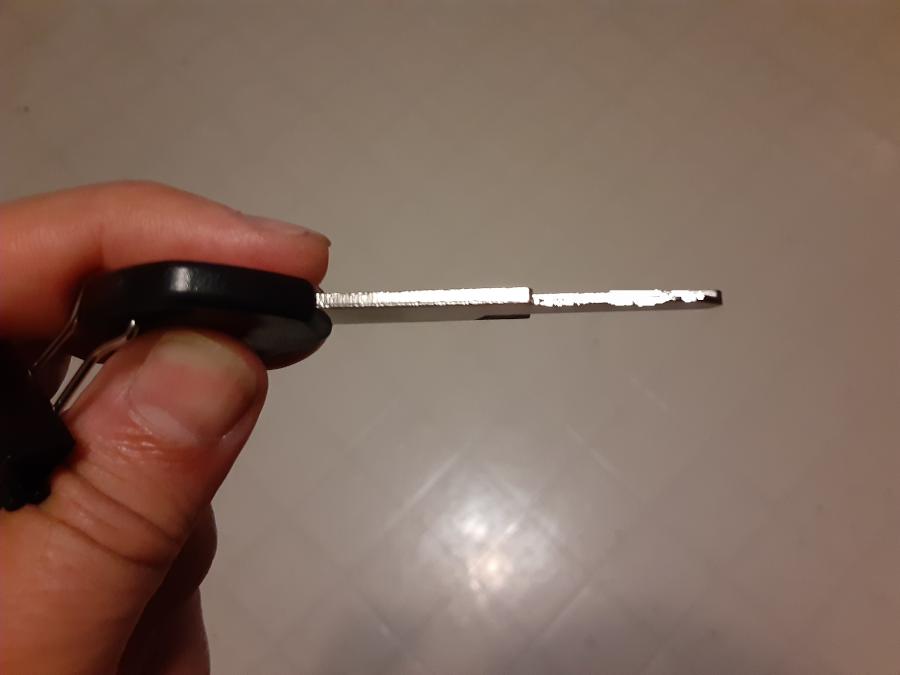
How Often Do You Lubricate A Motorcycle Ignition Switch?
I never figured out a routine, but like regular maintenance items like changing motorcycle engine oil( How Often Do You Need to Change Your Motorcycle’s Oil? ) or lubricating the motorcycle chain, I lubricate the ignition switch.
I lubricate more frequently if I notice the key is getting stiffer or I’ve been riding under wet conditions more.
Click To See My Recommended
TBR7 Upgrades

Hi I’m Tom, A New Motorcycle Rider and Blog Author.
I am a new rider(Pa Learners Permit at the end of 2020, and I received a Pa Motorcycle License in 2021 after passing a Motorcycle Safety Course).
I bought my first motorcycle, a TaoTao TBR7, at the beginning of 2021 and have been doing upgrades on that motorcycle since.
I added to my motorcycle collection by buying a Boom Vader Gen 2 in 2022, and that Grom-Clone motorcycle has been upgraded by me as well.
I continue to ride my Boom Vader Gen 2 motorcycle as well as my TaoTao TBR7 dual-sport bike.
Read more on my About Me page.
Fun Fact: I’ve only been on one group ride.
